Also read: best free product analytics software
Top Free Machine Learning Platforms for 2025
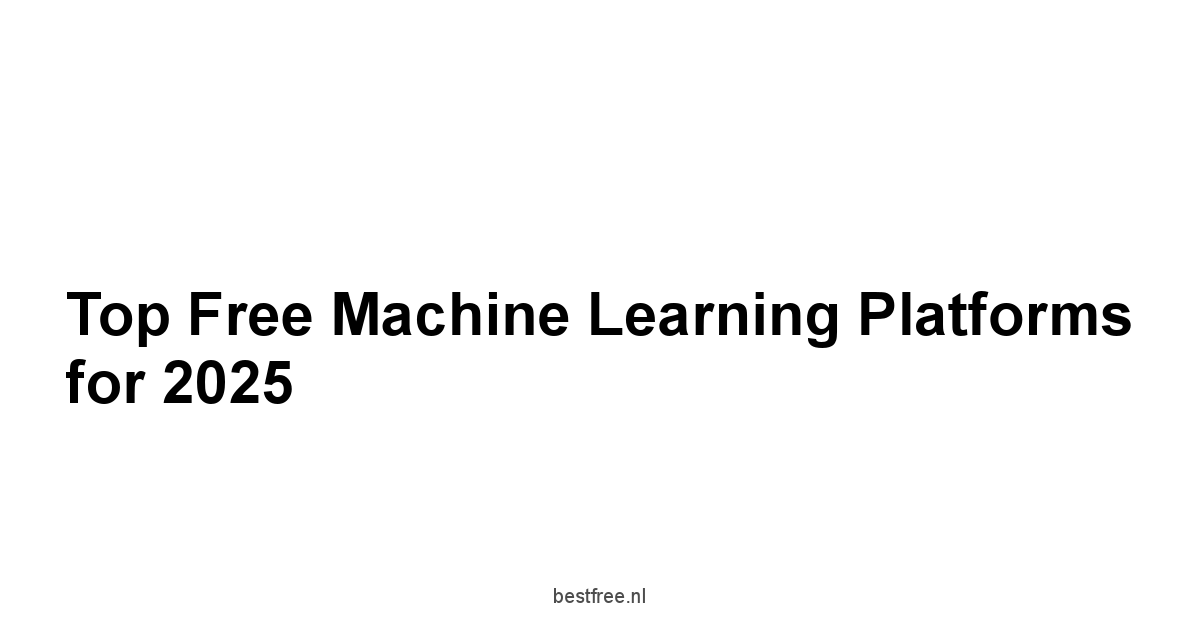
The rise of free machine learning platforms allows anyone to enter this field, igniting innovation.
Among these, TensorFlow shines as a titan for its flexibility and scalability. Scikit-Learn suits beginners with its simple environment and robust libraries. For those who favor a dynamic computation graph, PyTorch delivers unmatched flexibility and performance. These tools enable users to effectively manage data and craft models that tackle complex issues.
Choosing a platform can shape a project’s path and its prospects.
Factors like community support, ease of integration, and commitment to updates determine a platform’s long-term viability.
Let’s explore the strengths of each platform in 2025.
TensorFlow: The Powerhouse of Machine Learning
TensorFlow, crafted by Google, epitomizes machine learning with vast capabilities. It offers a flexible architecture suited for deployment on all platforms, from servers to mobile. This adaptability fuels its popularity, particularly for building intricate neural networks.
- Key Features:
- Performance: High-level APIs like Keras paired with low-level operations for customization.
- Ecosystem: A rich ecosystem with tools such as TensorBoard for visualization and TensorFlow Serving for deployment.
- Community: A large, expanding community ensures ongoing support and a wealth of knowledge.
| Feature | Description |
|---|---|
| Model Building | Support for deep learning and machine learning models |
| Deployment | Easy deployment via TensorFlow Serving |
| TensorFlow Lite | Facilitate deployment on mobile devices |
- Statistics: TensorFlow serves over 1 million developers worldwide, showcasing its vast reach across industries.
Scikit-Learn: The Beginner’s Toolkit
Scikit-Learn is the go-to for newcomers to machine learning. Built on NumPy, SciPy, and Matplotlib, it provides access to powerful tools. Its design emphasizes simplicity, making it perfect for beginners.
- Simple API: Intuitive and consistent design minimizes the learning curve.
- Algorithms: Broad support for classification, regression, and clustering.
- Versatility: Efficient handling makes it suitable for small to medium projects.
| Application Type | Example Algorithm |
|---|---|
| Classification | Support Vector Machines SVM |
| Regression | Linear Regression |
| Clustering | K-Means Clustering |
- Statistics: Cited in over 40,000 academic papers, Scikit-Learn proves its reliability in research.
PyTorch: Flexibility Meets Performance
PyTorch, from Facebook, is praised for its flexibility, winning favor among researchers. Its dynamic computation graph allows on-the-fly modifications, facilitating deep learning experimentation.
- Ease of Use: Intuitive design appeals to both beginners and experts.
- Performance: Highly efficient with complex models, especially convolutional networks.
- Interoperability: Works well with various Python libraries for easy functionality.
| Aspect | Description |
|---|---|
| Computation Graph | Dynamic and easy to manipulate |
| Support | Strong community support and thorough documentation |
- Statistics: PyTorch usage has surged by 200% in two years, establishing a strong position against TensorFlow.
Apache MXNet: Scalable and Efficient Deep Learning
Apache MXNet is an open-source framework noted for its scalability. It balances efficiency and ease, enabling developers to build complex models with minimal setup. Its support for both symbolic and imperative programming adds to its versatility.
- Scalability: High-performance across multiple GPUs and distributed systems.
- Multiple Language Support: Available in Python, Scala, and R.
- Community Growth: A slowly growing community with increasing resources.
| Feature | Description |
|---|---|
| Scalability | Optimized for large-scale processing |
| Multi-language | Supports various programming languages |
- Statistics: Adopted by major players like Amazon Alexa, proving its capability for demanding applications.
Keras: Simplified Neural Network Building
Keras streamlines model building, appealing to those favoring a straightforward approach. Operating as a high-level interface above multiple backends like TensorFlow and Theano, it simplifies the process.
- User-Friendly: Simplifies model creation and experimentation.
- Customization: Allows advanced capabilities while remaining user-friendly.
- Integration: Seamlessly blends with TensorFlow, enhancing functionality.
| Key Attribute | Description |
|---|---|
| Simplicity | Easy to learn for newcomers |
| Backend Flexibility | Leverages various backends for training |
- Statistics: Over 1 million users engage with Keras, valuing its straightforward approach to machine learning.
Also read: best free data labeling software in 2025
Essential Features to Look for in Machine Learning Software
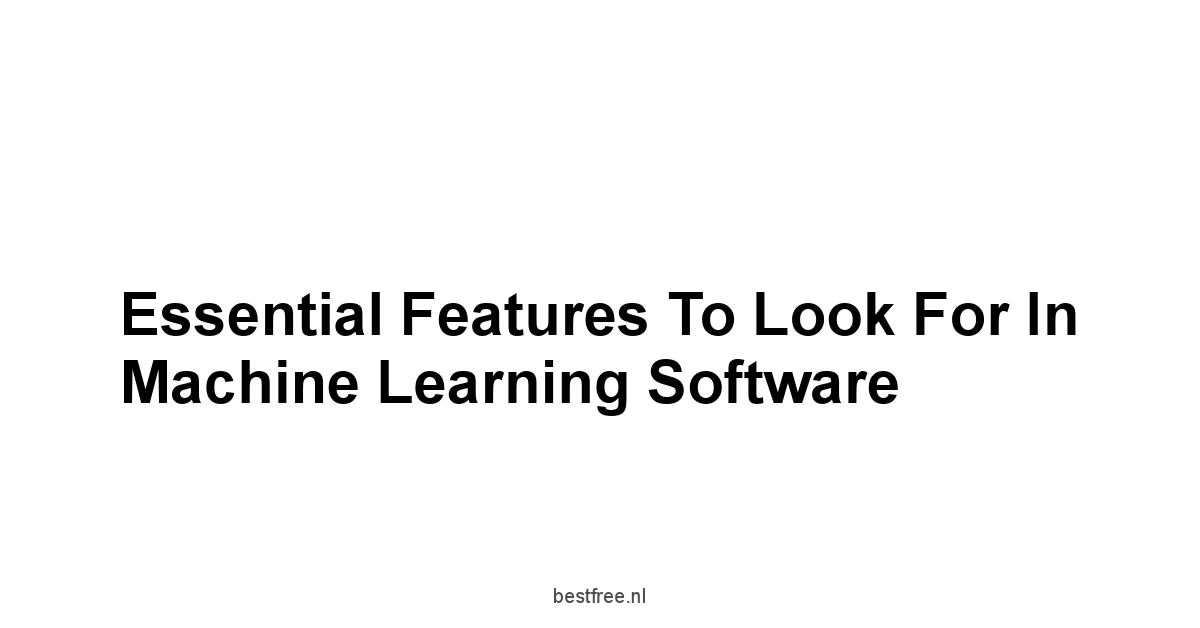
Choosing machine learning software is important. Some features are essential.
The right software simplifies tasks, boosts productivity, and leads to successful model training and implementation.
Here we examine the critical features of such software in 2025.
Firstly, user-friendliness matters. A platform that is easy to navigate will be adopted by developers and data scientists. Good documentation helps users maximize potential. This is key for beginners needing support.
Community support is vital. Forums, user groups, and educational content are crucial for adopting software. An engaged community offers insights, solves problems, and shares innovative uses. Model deployment capabilities are important. Transitioning from development to deployment without excessive effort is essential.
User-Friendliness: Accessibility for All
User-friendliness means ease of operation.
Key aspects include:
- Intuitive Interface: A clean UI enhances efficiency. Features should be accessible without navigating complex menus.
- Ease of Installation: Minimal setup allows focus on model building instead of installation issues.
| Attribute | Importance |
|---|---|
| Learning Curve | Reduced learning curve boosts adoption rates |
| Accessibility | Usable by all skill levels |
A user-friendly design fosters experimentation.
Users can iteratively enhance their models, yielding stronger solutions.
Comprehensive Documentation: Key to Success
Good documentation underpins effective software use.
Reasons for its importance include:
- Guidance: Quality documentation offers structured paths and troubleshooting steps.
- Examples: Practical examples and case studies help users grasp concepts.
| Documentation Type | Benefit |
|---|---|
| Getting Started Guides | Assist new users in beginning smoothly |
| API References | Detail functionalities |
Proper documentation correlates with project success, empowering users to confront challenges.
Community Support: Learning from Peers
A strong community brings significant benefits:
- Peer Learning: Forums enable knowledge sharing. Users seek help, share experiences, and offer advice.
- User-Generated Content: Community tutorials provide varied perspectives on common issues.
| Community Aspect | Advantage |
|---|---|
| Active Forums | Rapid feedback and support opportunities |
| Meetups | Networking with professionals |
Seventy percent of users utilize machine-learning platforms and turn to community forums for support, showing the value of a vibrant community.
Model Deployment Capabilities: Bringing Ideas to Life
After building a model, deployment follows.
Key deployment features include:
- Integration: Must support connection with cloud services and existing platforms for smooth deployment.
- Scalability: Efficient deployment options that grow with user needs are crucial.
| Deployment Feature | Description |
| Cloud Compatibility | Deploy models on major cloud platforms |
| Monitoring Tools | Track model performance and effectiveness |
A seamless deployment experience boosts user confidence and satisfaction.
Also read: 10 beste gratis videostreamingdiensten
Popular Libraries Integrated with Machine Learning Software
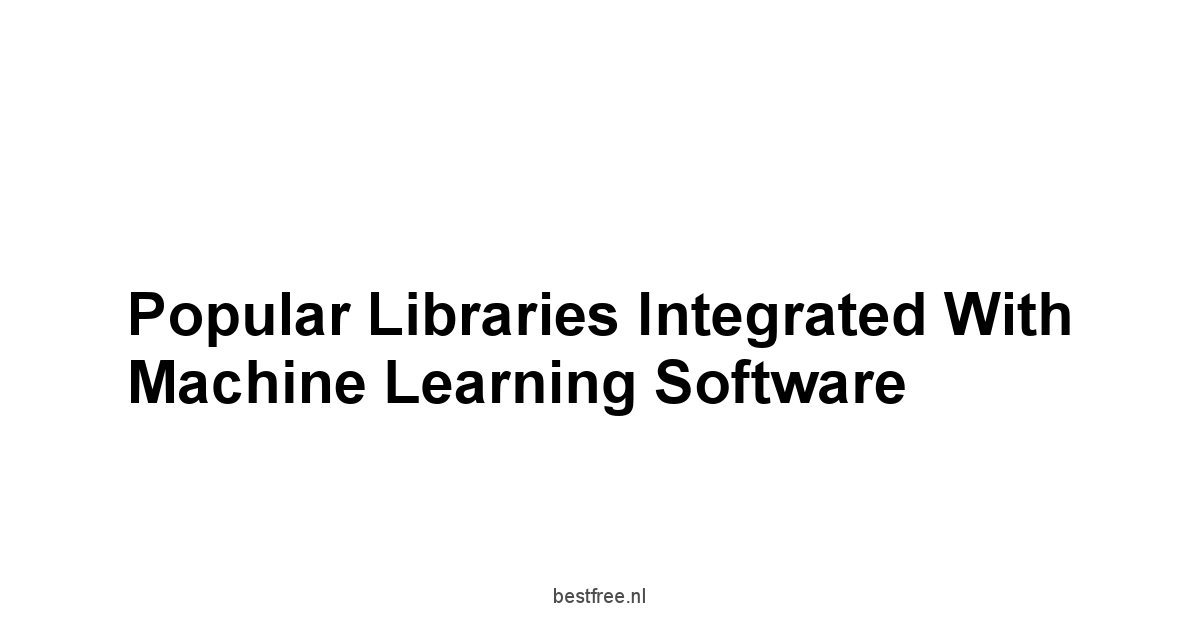
Several libraries have become essential tools for developers using machine learning software.
These libraries enhance major platforms, enabling efficient workflows and better analysis.
Among the notable libraries are NumPy and Pandas, which ease data manipulation. For visualization, developers prefer Matplotlib and Seaborn. Lastly, OpenCV is prominent for image processing and computer vision.
NumPy: The Backbone of Data Manipulation
NumPy is central to numerical computing in Python. It executes mathematical functions and stores large datasets efficiently.
- Core Features:
- N-dimensional Arrays: Manipulates numeric arrays in multiple dimensions.
- Broadcasting: Expands array dimensions automatically for arithmetic without delay.
| Feature | Benefit |
|---|---|
| Performance | Efficient handling of large datasets |
| Interoperability | Seamless integration with other libraries |
Over 50% of data science projects use NumPy for calculations.
Pandas: Data Handling Made Easy
Pandas simplifies data manipulation and analysis. It handles tabular datasets well.
- DataFrames: Provides flexible structures with optimized performance, resembling spreadsheets.
- IO Tools: Excellent for importing and exporting various file formats.
| Functionality | Description |
| Data Cleaning | Tools for cleaning datasets |
| Time Series Analysis | Supports date-time functionalities |
Over 85% of data scientists appreciate Pandas for its efficiency.
Matplotlib: Visualizing Your Data
Matplotlib is essential for visualization, allowing developers to create plots from simple graphs to complex 3D visuals.
- Customization: Highly adjustable; graphs can fit specific needs.
- Production Quality: Produces high-quality graphs for professional use.
| Visualization Type | Purpose |
|---|---|
| Line Charts | Ideal for showing trends over time |
| Scatter Plots | Illustrates relationships between variables |
Nearly 60% of data visualizations in research papers use Matplotlib.
Seaborn: Enhanced Statistical Graphics
Building on Matplotlib, Seaborn simplifies the creation of attractive statistical graphics.
- Built-In Themes: Enhances visuals with default themes.
- Statistical Functions: Allows for linear regressions and other visualizations easily.
| Comparative Feature | Description |
|---|---|
| Aesthetic Adjustments | Ensures plots are visually appealing |
| Statistical Insight | Incorporates built-in stats for analyses |
Seaborn’s popularity is growing, used in over 40% of visual content among data scientists.
OpenCV: Image Processing and Computer Vision
OpenCV is the preferred library for real-time computer vision. It manages image processing tasks effectively.
- Image Transformation: Offers algorithms for image enhancement and information extraction.
- Face Recognition: Contains functionalities for facial recognition.
| Capability | Application |
|---|---|
| Real-Time Processing | Effective for immediate results |
| Machine Learning | Supports ML models for advanced tasks |
OpenCV’s use has surged, with over 70% of projects employing it for image tasks in machine learning.
Also read: best free pricing software
Best Practices for Using Free Machine Learning Software
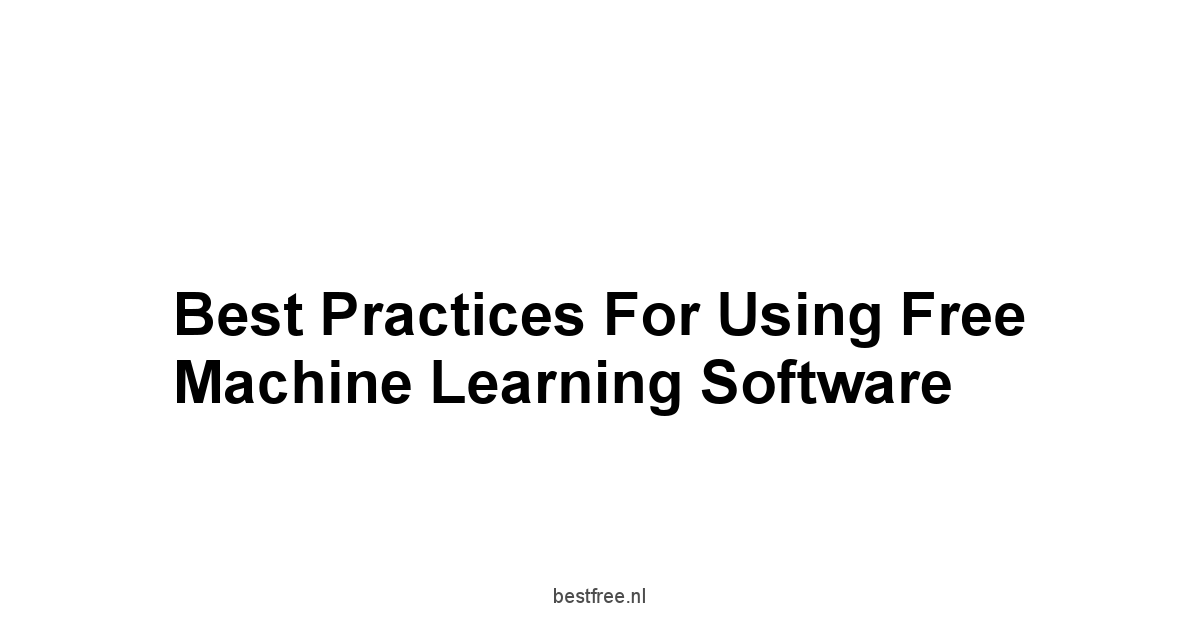
To get the most from free machine learning software, developers must follow key practices.
These practices promote efficiency and ensure reliable results.
Here are recommended strategies to enhance performance and impact.
Understanding the core problem before diving into data is essential.
A clear problem statement guides all subsequent steps.
Starting with clear goals allows developers to assess data needs and build models that meet user expectations.
Next, focus on data preparation and cleaning. High-quality data is the foundation of effective models. Following that, iterations for model improvement are vital in refining results. Finally, choosing the right evaluation metrics provides accurate insights into a model’s effectiveness.
Define the Problem: Clarity for Direction
Defining the problem lays the groundwork for the entire project.
Key components include:
- Articulating Goals: Clear objectives guide the project and assess success.
- Understanding Constraints: Recognizing time limits and resources aids in realistic planning.
| Consideration | Benefit |
|---|---|
| Goal Alignment | Ensures common vision among stakeholders |
| Scope Definition | Outlines project boundaries |
Statistics show that projects with clear problems succeed 40% more than those without proper scope.
Data Preparation: Cleaning and Structuring Your Data
Once defined, the next step is preparing the data for analysis.
Essential practices include:
- Data Validation: Ensuring accuracy and consistency is crucial.
- Normalization: Similar formatting promotes reliability when training models.
| Preparation Step | Outcome |
|---|---|
| Outlier Detection | Excludes data points that skew results |
| Data Transformation | Enables uniformity and comparability |
Research indicates that about 80% of a data scientist’s time is spent on cleaning and preparation before analysis.
Iterative Model Improvement: Learning Through Experimentation
Model improvement is iterative.
Key practices include:
- Hypothesis Testing: Experimentation reveals areas for enhancement.
- Version Control: Tracking different versions of models enhances performance oversight.
| Improvement Strategy | Description |
| A/B Testing | Compares two model versions |
| Cross-Validation | Ensures sound predictive power |
Statistics reveal that iterative practices lead to a 30% increase in model performance and reliability.
Evaluation Metrics: Measuring Success Accurately
Choosing the right evaluation metrics is crucial for performance assessment.
Integral metrics include:
- Accuracy: Measures correct predictions made.
- Precision and Recall: Important when data classes are imbalanced.
| Metric | Usage |
| F1 Score | Balances precision and recall for accuracy |
| ROC-AUC Score | Measures classifier performance across thresholds |
Research shows that selecting appropriate metrics positively influences model validation, leading to more effective outcomes.
Also read: best free generative ai infrastructure software in 2025
Trends Impacting Machine Learning Software in 2025
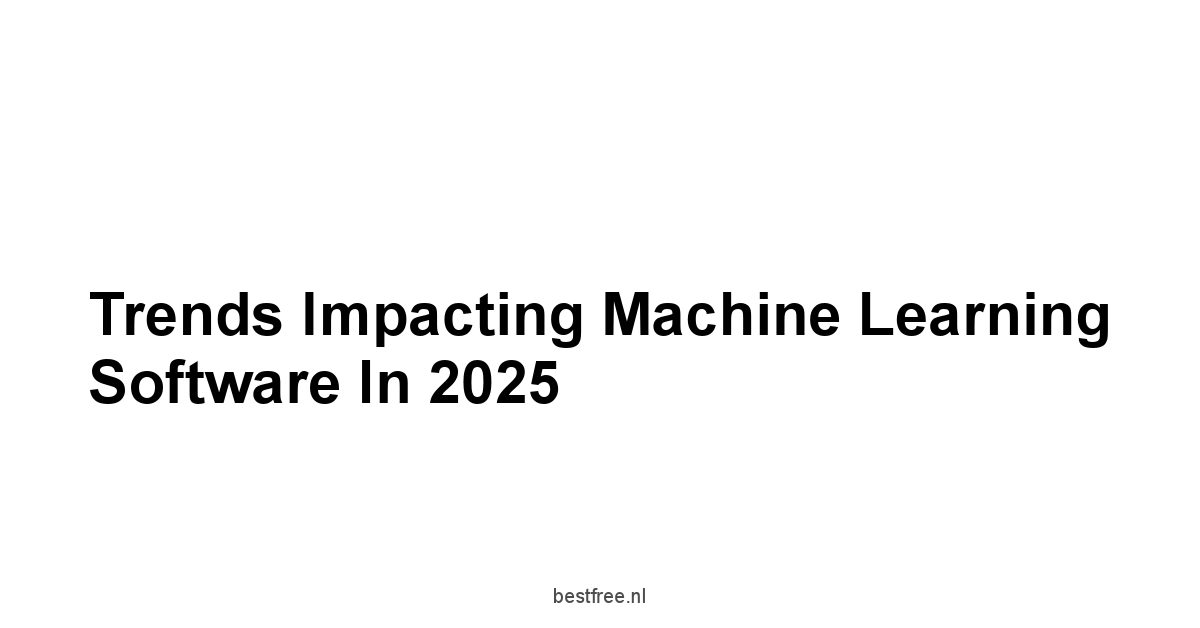
In 2025, understanding these trends is crucial for practitioners.
- AutoML, or Automated Machine Learning, has emerged as a pivotal creation. This method simplifies tasks, making machine learning accessible to non-experts. Integration of edge computing improves real-time processing, allowing AI to work closer to data rather than relying on distant cloud resources.
The increasing emphasis on ethical AI practices is another significant trend. Addressing bias and ethics is critical as awareness grows among developers and users. Finally, the rise of federated learning marks a shift toward collaboration, enabling models to train without centralized data, enhancing privacy.
Rise of AutoML: Making AI More Accessible
AutoML attracts interest from non-experts by simplifying complex tasks:
- Streamlined Workflow: Provides easy interfaces that automate tasks such as feature selection and model tuning.
- Hardware Independence: Users run models in real-time without understanding underlying algorithms.
| Benefit | Description |
|---|---|
| Democratization of AI | Makes machine learning open to all |
| Improved Efficiency | Cuts time spent on model development |
Current studies show that up to 65% of projects use AutoML tools, fostering a broader approach to AI creation.
Integration of Edge Computing: AI at the Source
The trend toward edge computing signifies a vital shift in data processing:
- Reduced Latency: Processing happens closer to the source, improving response times for real-time applications.
- Data Privacy: Less data transfer lowers risk since sensitive information stays local.
| Feature | Advantage |
|---|---|
| Real-Time Analytics | Immediate results for urgent tasks |
| Enhanced Security | Limits risks by reducing data transmission |
Research shows firms using edge computing achieve a 50% faster processing rate.
Increased Focus on Ethics and Bias: Responsible AI Practices
As machine learning grows, addressing ethics rises in importance:
- Bias Mitigation: Tools are created to find and fix biases in data and models.
- Transparency: Demands for transparency in algorithms lead to new laws and guidelines.
| Ethical Consideration | Approach |
|---|---|
| Accountability | Builds frameworks for responsible AI use |
| Fairness | Aims for equitable outcomes in AI |
Recent surveys indicate that 78% of AI practitioners now place high importance on ethics in their work.
Expansion of Federated Learning: Collaborative Learning Approaches
Federated learning fosters decentralized learning, keeping data at its source:
- Privacy Preservation: Users train models without sharing raw data.
- Collaborative Models: Multiple organizations can improve models without risking data security.
| Collaborative Advantage | Description |
|---|---|
| Increased Model Robustness | Merging diverse data sources enhances predictions |
| Regulatory Compliance | Better adheres to data protection rules |
Statistics show federated learning methods have risen 45% in usage among firms mindful of data privacy.
Also read: 7 best free antivirus software
Resources for Learning Machine Learning Software
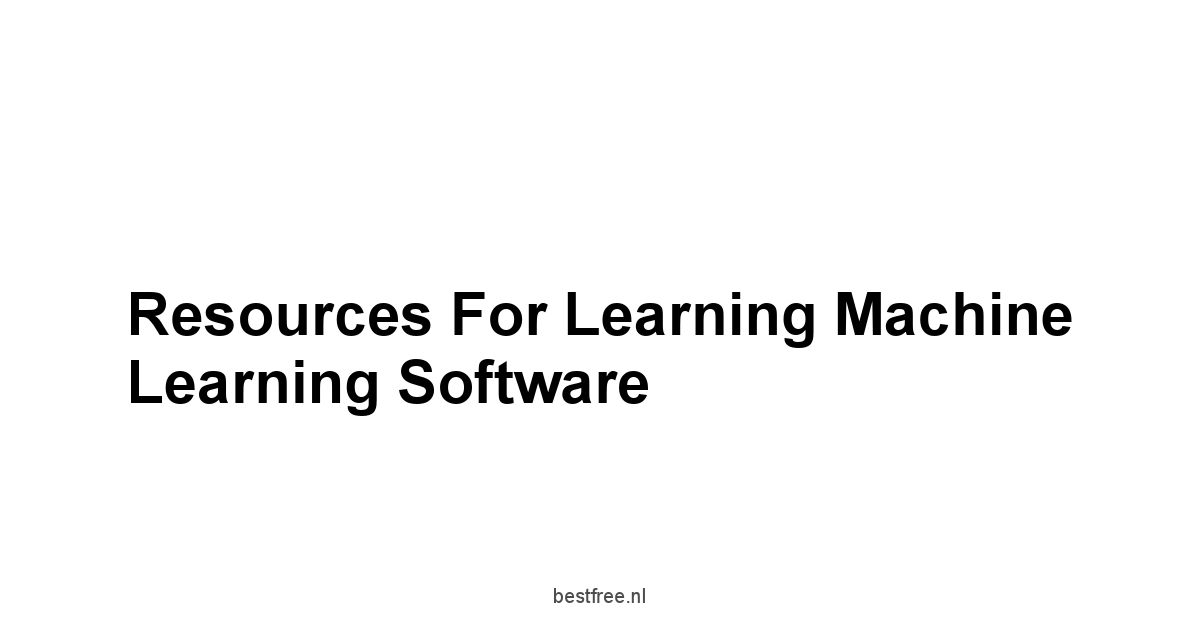
For those entering machine learning, quality resources matter.
Online courses are key, offering direct instruction and solid examples. Community forums connect learners with seasoned practitioners, enriching the learning experience. Access to documentation and tutorials is vital, while webinars and workshops provide practical experiences.
Online Courses: Structured Learning Paths
Online courses give learners structured curricula and expert guidance.
Many platforms offer free and paid machine learning courses, open to all.
- Course Platforms: Sites like Coursera, edX, and Udacity feature thousands of courses with reviews to aid choices.
- Hands-On Projects: Real projects alongside theory reinforce learning.
| Course Format | Benefit |
|---|---|
| Self-Paced | Learners control their pace |
| Certificate Programs | Recognizes completed coursework |
Statistics show students in guided online courses retain 55% more information.
Community Forums: Engage with Experienced Practitioners
Active forums are vital for ongoing learning.
These platforms connect learners with experts who share insights and solutions.
- Popular Forums: Sites like Stack Overflow, Reddit’s r/MachineLearning, and Machine Learning Mastery excel at knowledge sharing.
- Mentorship Opportunities: Forums can lead to mentors or collaborators.
| Community Aspect | Advantage |
|---|---|
| Q&A Support | Fast answers to technical questions |
| Networking | Build connections with industry experts |
Surveys show 62% of data scientists seek help from forums regularly.
Documentation and Tutorials: Invaluable Reference Material
Thorough documentation is crucial for understanding software.
Good documentation provides:
- Detailed Guides: Instructions for complex functions.
- Case Studies: Real applications showcasing effective use.
| Documentation Type | Usage |
| API References | Complete guide to all functions available |
| Example Code | Code snippets for practical application |
Using quality documentation can improve project efficiency by 35%, as users navigate software better.
Webinars and Workshops: Live Learning Experiences
Attending webinars and workshops offers clear benefits:
- Direct Interaction: Engage with experts for immediate Q&A.
- Current Trends: Webinars cover timely topics and recent advancements.
| Learning Format | Focus |
| Real-Time Feedback | Instant clarifications and guidance |
| Networking Event | Chance to connect with industry peers |
Statistics reveal 80% of participants find webinars valuable, enhancing learning through interaction and real-time engagement.
Also read: 7 best free cloud storage services
Final Verdict
As we approach 2025, tools like TensorFlow, Scikit-Learn, PyTorch, Apache MXNet, and Keras emerge as key players in innovation.
Each platform has its strengths, serving different user needs and projects.
This variety allows creativity to flourish and complex problems to be solved, promising a bright future for machine learning.
Choosing the right platform shapes a project’s path, highlighting the need for community support and ease of use.
With user-friendly designs and thorough documentation, platforms make machine learning accessible to beginners.
At the same time, the focus on ethical AI and federated learning indicates a shift towards responsible technology, fostering trust and collaboration among industry players.
As trends like AutoML and edge computing redefine machine learning, practitioners must stay alert and flexible, embracing progress to enhance their skills.
With over 1 million developers using TensorFlow and strong support for PyTorch and Scikit-Learn, the desire for machine learning solutions grows sharply.
In summary, the future of machine learning involves not just technology but also how to use these tools for smart decisions and innovation.
By selecting the right platform and engaging with community resources, practitioners will unlock the true power of machine learning, paving the way for significant advancements in many fields.
As we move forward, the possibilities are endless, ushering in a new era of creativity and efficiency driven by powerful machine learning technologies.
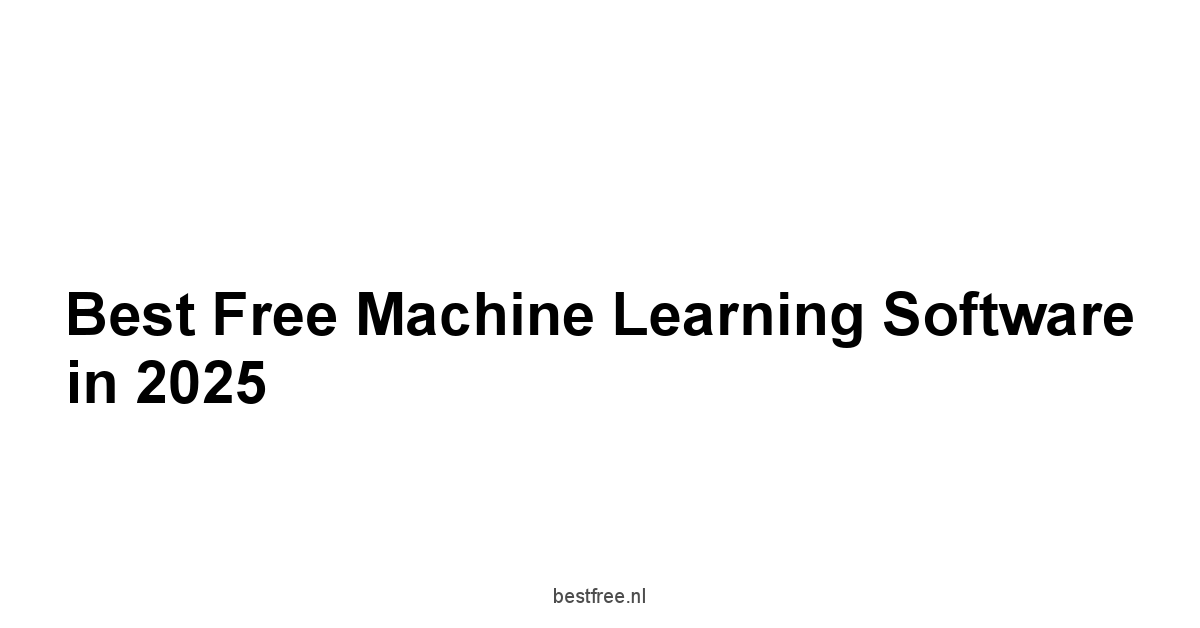




Leave a Reply